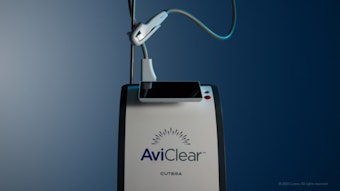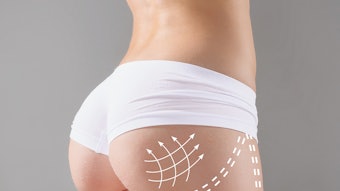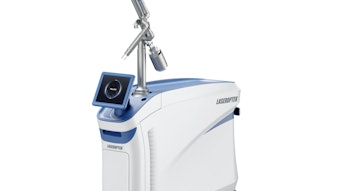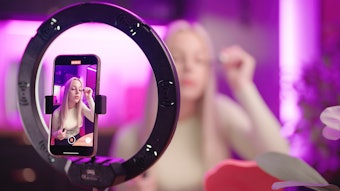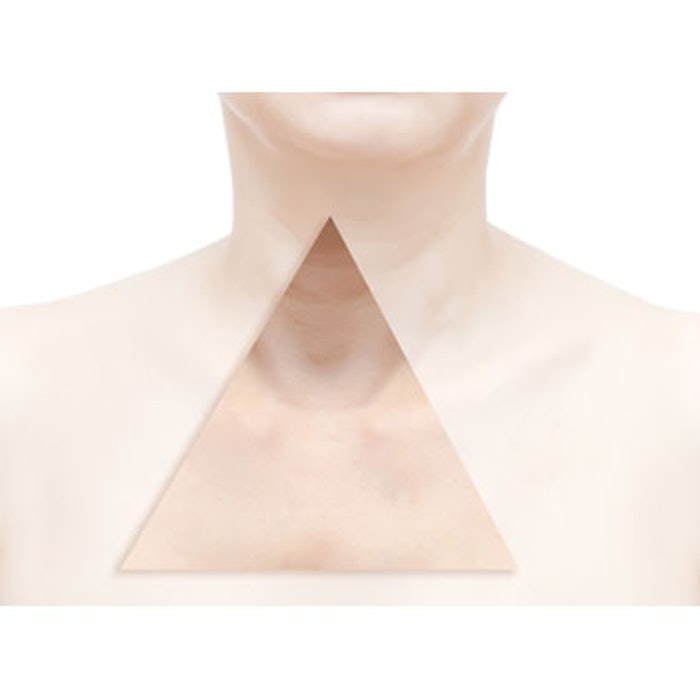
Traditionally, the neck and décolleté have been among the most challenging areas to treat nonsurgically. Effective energy-based devices pose risks when used on the delicate skin of the neck and chest, and concerns such as laxity and visible banding have responded poorly to noninvasive tools. But that is changing. Thanks to new technologies, new injection techniques and the use of combination treatments, physicians can visibly improve the aging neck and chest. The key to getting optimal results lies in properly diagnosing the cause of patient concerns—such as bone loss, loss of collagen and elastin or photodamage-induced discoloration—and understanding the full range of procedures now available.
“People are quick to jump to treatments and what they are recommended for rather than first assessing and diagnosing what is causing the changes we’re seeing,” says Sabrina Guillen Fabi, MD, FAAD, FAACS, volunteer assistant clinical professor of dermatology at University of California, San Diego. “By the time patients come in, they usually have a combination of changes that are occurring. With the appropriate diagnosis and the use of combination treatments, we get the best results.”
When a patient enters New Jersey Plastic Surgery in Montclair, New Jersey, Barry DiBernardo, MD, performs a Visia (Canfield Scientific) scan. “This allows us to quantify a number of things: color (reds and browns), skin texture, pores, wrinkles and porphyrins,” he says. “Once we know what the patient’s baseline is, we can determine what tools we’re going to use. Fortunately, today we have a tool to address every one of those things.”
Addressing Discoloration
Dr. DiBernardo tends to work from the outside in, first addressing surface concerns, such as redness and excess pigmentation with either vascular lasers, IPL or a Q-switched alexandrite laser.
The benefit of IPL, says Dr. Fabi, is that it can address both reds and browns. “In Southern California, at least, if people have severe redness on their chests and necks, it’s usually mixed with brown, because it’s a sign of photodamage,” she says. “I typically use an IPL because you don’t have as much downtime, you don’t get as much swelling as you may get from a pulsed dye laser, and it’s able to address both the red and the brown in a single treatment versus having to use two different lasers to address each of the conditions.” She notes that IPL is most effective for redness.
If the patient has multiple macular seborrheic keratoses or additional lentigines that the IPL is no longer able to pick up with subsequent treatments, Dr. Fabi uses a Q-switched alexandrite laser to individually target the pigmented lesions.
Another option for patients who have a combination of concerns, such as discoloration, rough texture and mild laxity, is the Sciton Halo, a combination 1,470nm/2,940nm laser. “With the Halo, we can go after all those concerns at once,” says Dr. DiBernardo. However, practitioners must be careful with the energy settings and discuss downtime expectations with the patient.
Because there are fewer blood vessels and pilosebaceous glands in the décolleté, “you will have longer healing times when treating that area,” says Dr. DiBernardo. “You may also need to blend in BBL (BroadBand Light) with a filter for reds or a filter for browns to address more stubborn areas of redness or pigment.”
Dr. Fabi modifies the fluence and delay of her IPL when working on the neck and chest. “I use a Lumenis IPL device, which has the ability to double pulse,” she says. “I’m able to split the pulse in two with a delay in between so that the epidermis has the ability to cool. By increasing that delay, you can compensate for the fact that you have more sensitive tissue in these areas.”
The number of sessions required depends on the degree of photodamage as well as the power of the IPL device you are using. “If it’s a very low-powered IPL, it can take multiple treatments. With the high-powered IPL, you can typically get significant results with just two treatments. I tell my patients they’ll need two to three sessions depending on the severity of their sun damage,” says Dr. Fabi.
Dr. DiBernardo spaces his laser and BBL treatments one month apart. “This gives enough time for the redness and pigment to clear, so you can see where you’re at and whether you need another treatment,” he says.
When treating patients with the Q-switched alexandrite laser, Dr. Fabi looks for whitening of the tissue to determine the correct settings. But she cautions that clinical endpoints are more difficult to determine with an IPL. “With the Alex, if you’re too high you have pinpoint bleeding and if you’re too low you’re not going to see any whitening of the tissue,” she says. “An IPL can be quite deceiving. You may not get immediate erythema; it may be delayed. So I generally tell people to not rely on the initial cutaneous response and to not increase their settings based on a mild initial cutaneous response, because it may come on 30 minutes later. By then you’ve burned the patient. Understanding the right IPL settings just comes with experience.”
As with all laser and light-based treatments, the aforementioned options place patients with darker skin types at higher risk of post-inflammatory hyperpigmentation and scarring. But these patients typically do not experience the same level of photodamage as those with lighter skin types. “You rarely see the same degree of photodamage, especially with reds and browns, in a Fitzpatrick skin type 4 or 5 versus a skin type 1, 2 or 3,” says Dr. Fabi. “If they do have substantial photodamage, it’s typically more pigment than redness.”
In these cases, she opts for either a 1,927nm thulium laser or the Solta Clear + Brilliant Permea 1,927nm diode laser. “If they do have redness, I typically address that with a pulsed dye laser and then immediately on top of that, I either do a 1,927nm thulium laser or I’ll use the Clear + Brilliant Permea.”
Textural Concerns
After reviewing surface issues, the next concern is skin texture and laxity. As a result of aging and photodamage, patients begin to experience laxity in the jaw line. Lines and wrinkles can also appear in the neck. The first step in determining the best treatment option is understanding why these changes are occurring. “The common reason people don’t see a result with noninvasive and minimally invasive neck treatments is that they’re using a treatment modality for the wrong indication,” says Dr. Fabi. “If the patient has laxity along the jawline, you have to first determine whether it’s due to bone loss.”
We all lose mandible as we age and, if the laxity is due to bone loss in this area, “then you don’t have the bony structure to support the soft tissue,” says Dr. Fabi. “No matter how much you tighten the skin, if you don’t have the structure to support it, it’s not going improve the laxity in the area.”
At Preveda Health & Aesthetics in Asheville, North Carolina, aesthetic nurse injector Hollie Harris, RN, uses depot injections of either Restylane Lyft or Restylane Defyne along the jawline to add structure for patients experiencing bone loss. “Every person breaks down hyaluronic acid fillers differently, so patients can expect results to last anywhere from six months to two years, and we recommend an annual touch up treatment to maintain the desired outcome,” she says, noting that injectors must be careful to avoid the facial artery when working in the jawline.
If the laxity is secondary to fat repositioning along the jowls, Dr. Fabi recommends liposuction, CoolSculpting or Kybella. “I will use ThermiRF—a subsurface monopolar radiofrequency probe—coupled with my liposuction in order to promote a little bit of neocollagenesis after the liposuction procedure,” she says.
The choice between noninvasive options, such as CoolSculpting or SculpSure (Cynosure), and minimally invasive options, such as ThermiRF, FaceTite (InMode Aesthetics) or the Precision TX (Cynosure) side-firing laser, is often dependent on the patient’s tolerance for downtime. If the patient can tolerate a few days to a week of downtime, the benefit of the minimally invasive subsurface treatments are that they typically require only one session (versus three to six with a noninvasive surface device) and “you’ll get about 10 times the results from the minimally invasive procedure in terms of improvement in laxity and texture,” says DiBernardo. “With treatments such as the FaceTite, ThermiRF or Precision TX, you get very good results, equaling surgery, and they can be done in the office in about 30 minutes.”
If the patient does not have bone loss or excess fat, or if laxity remains once you have addressed mandible loss in the jawline and respositioning of fat in the submental region, there are a few energy-based technologies that can help lift and tighten by increasing collagen and elastin. Dr. Fabi uses Ultherapy (microfocused ultrasound), “because it’s the only device that has a nonsurgical lift indication for the submental area,” she says. To maximize patient comfort during the procedure, she uses PRO-NOX, which is a nitrous oxide-oxygen blend.
Dr. DiBernardo looks to either RF-based microneedling or noninvasive RF-based procedures. “You can use the microneedling with energy anywhere on the body. You just control the depth depending on what you’re targeting,” he says. “If you want to bump it up a notch, you can combine that with platelet-rich plasma (PRP), where you drive the PRP into the tissue with the microneedling.”
His top choice for surface RF is the TempSure (Cynosure) because it includes both noninvasive and surgical RF, which expands its utility in his surgical practice. “With the surface RF, there is no downtime, and that unit also has the only surgical RF, which I can use to remove excess upper eyelid skin under local anesthesia, for example.”
Dermal fillers—sometimes combined with botulinum toxins—are another option for patients who have etched necklace lines with minimal skin laxity. Harris injects Restylane Refyne into necklace lines to help smooth the wrinkles, noting that she performs only a very light massage of the filler following injection. “We often combine this treatment with Dysport injections to optimize results,” she says. “We do intradermal injections with dosages ranging from 3 units to 6 units per site, spaced approximately 2cm to 3cm apart.”
Platysmal Bands
Moving to the deepest planes, visible platysmal bands are the primary musculature concern in the aging neck. For mild-to-moderate banding, botulinum toxin injections can temporarily soften the appearance of the bands. “Depending on the patient’s muscle mass, desired degree of improvement and the prominence of the bands, patients can expect results that last for three to four months,” says Harris.
She typically uses Dysport injections for treatment of vertical platysmal bands with dosage ranging from 3 to 6 units, spaced 1.5cm to 2cm apart. “We use modest dosing levels—from 6 to 75 units total—and recommend that the patient follow up in two to three weeks to assess the result. We find this dosing is usually sufficient to achieve a noticeable effect,” says Harris.
The toxin is injected intramuscularly into the most prominent part of the band. “Our method involves asking the patient to grimace, which tightens the neck and highlights the problematic muscles. We then pinch the skin of the platysma band while staying 2cm to 2.5cm below the mandibular border to avoid affecting the facial muscles of expression,” says Harris. “By lifting the band, this pulls the muscle up and away from underlying anatomical structures, which minimizes the risk of diffusion. Injection into the strap muscles must be evaded to avoid dysphagia, dysphonia and weakness of the neck.”
Knowledge of both injection technique and botulinum toxin dosages is critical in providing safe treatment. “All of the neurotoxins have a similar mechanism of action, but doses are not interchangeable. For treatment of platysmal bands, the median total dose for Dysport ranges from 40 to 125 units. Botox and Xeomin dosages are similar, ranging from 30 to 50 units,” says Harris.
While botulinum toxins have become a popular treatment for visible platysmal banding, Dr. DiBernardo notes that in cases of prominent bands, the outcomes—and the temporary nature of the injectables—can leave patients unsatisified. “You can inject some neurotoxin in there and maybe get some relaxation of the muscle
to tone it down a little bit, but that’s a quick fix. It’s not long-term,” he says.
For patients with more severe banding and for those seeking a longer-term fix, the only two options are surgery or ThermiRase. “The only energy source that truly treats the platysma is the ThermiRase from Thermi,” says Dr. DiBernardo. “You track out the nerves and zap them with energy for one minute at 85 degrees. It makes the bands go away, and the results can last from six to12 months. But the final answer is, if you have really bad platysmal banding, you need to do a neck lift.”
In most cases, patients unhappy with the appearance of their necks and décolleté area will present with a variety of the above-mentioned concerns. And combination treatments will best help them achieve their desired outcomes. If you are performing both injectables and energy-based treatments, they should be spaced at least two weeks apart to prevent migration or degradation of the injectable. “Preferably we do the laser treatments first, but we usually don’t have any issues as long as there’s a window of about two to three weeks between the treatments,” says Harris.
Providing patients with an effective skincare regimen will also help improve and prolong outcomes. “Whatever we’re doing, at that first visit we want to get patients on a good skincare regimen that’s going to change the inner working of their cells,” says Dr. DiBernardo. “This preps the skin for treatment, helps maintain the results once we’re done and continues building collagen and clearing pigment and redness moving forward. Achieving good, long-term results is not a one-stop treatment.”
Inga Hansen is the executive editor of MedEsthetics.
Image copyright istock.com/YKTR



